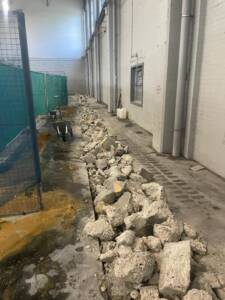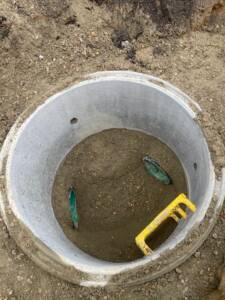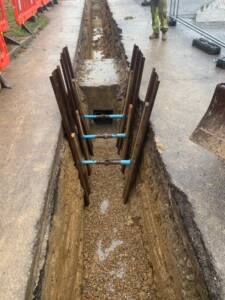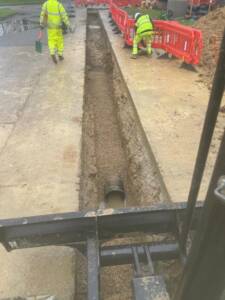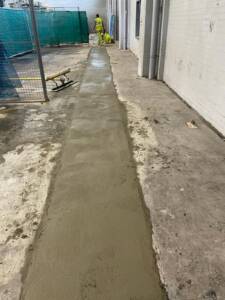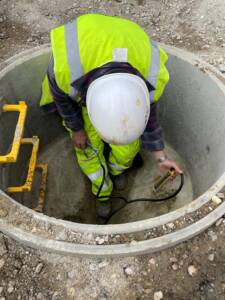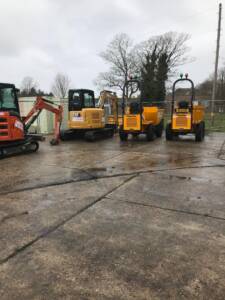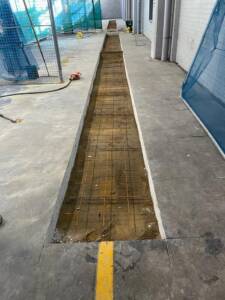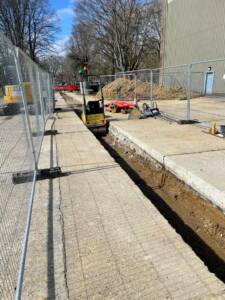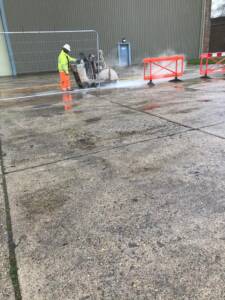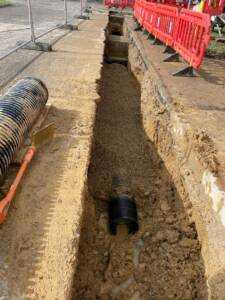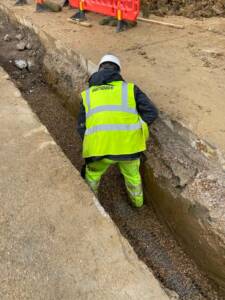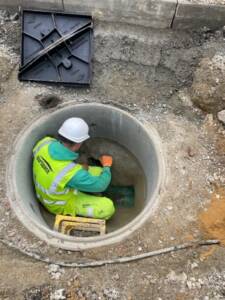This was a 12 week project to supply labour, plant and materials for the upgrade of the drainage system to a Military facility. This consisted of replacing old for new drainage pipe with 150mm to 225mm drainage runs. There were new chambers installed at various locations located on the plans. This project involved breaking out areas of hard and soft landscapes. Re-instating road areas, road traffic management, soft landscapes and internal re-enforced concrete slab.
Installing a large underground drainage system for a mode of development (MOD) involved several critical steps to ensure effective water management and environmental protection. Here’s a brief overview:
- Planning and Design:
- Site Assessment: We conducted a thorough assessment of the site to understand soil types, hydrology, and existing drainage patterns.
- Regulatory Compliance: Ensured that the design complies with local regulations and environmental standards.
- Capacity Calculation: Determined the required drainage capacity based on potential water flow and stormwater runoff.
- System Design:
- This was completed by the client and their consultants who designed the layout of the drainage system, including pipes, catch basins, and outfalls, ensuring proper slope and alignment for effective water flow.
- Appropriate materials, such as PVC or HDPE pipes, to withstand soil and water conditions.
- Excavation:
- Before commencement of work we marked out the intended layout and began excavation. Ensure sufficient depth and width to accommodate the pipes and structures.
- Manage excavated soil appropriately, considering safety and environmental factors.
- Installation:
- Placed gravel and stone in the bottom of the trench to facilitate drainage.
- Lay the drainage pipes in a graded manner, ensuring proper alignment and connection to catch basins or other drainage structures.
- Backfilled around the pipes with gravel to provide support and prevent settling.
- Connecting Structures:
- Installed catch basins or sump pits at strategic locations to collect surface runoff. Ensure they connect correctly to the main drainage pipes.
- Creating energy dissipaters and outfalls where the drainage system discharges water to prevent erosion and manage flow.
- Testing:
- Conducted pressure and flow tests to ensure that the system was functioning correctly and there were no leaks or blockages.
- Conducted pressure and flow tests to ensure that the system was functioning correctly and there were no leaks or blockages.
- Restoration:
- Restored the surface by replacing soil or paving and tarmac road surfaces over the excavation, ensured that the area was safe and aesthetically pleasing.


